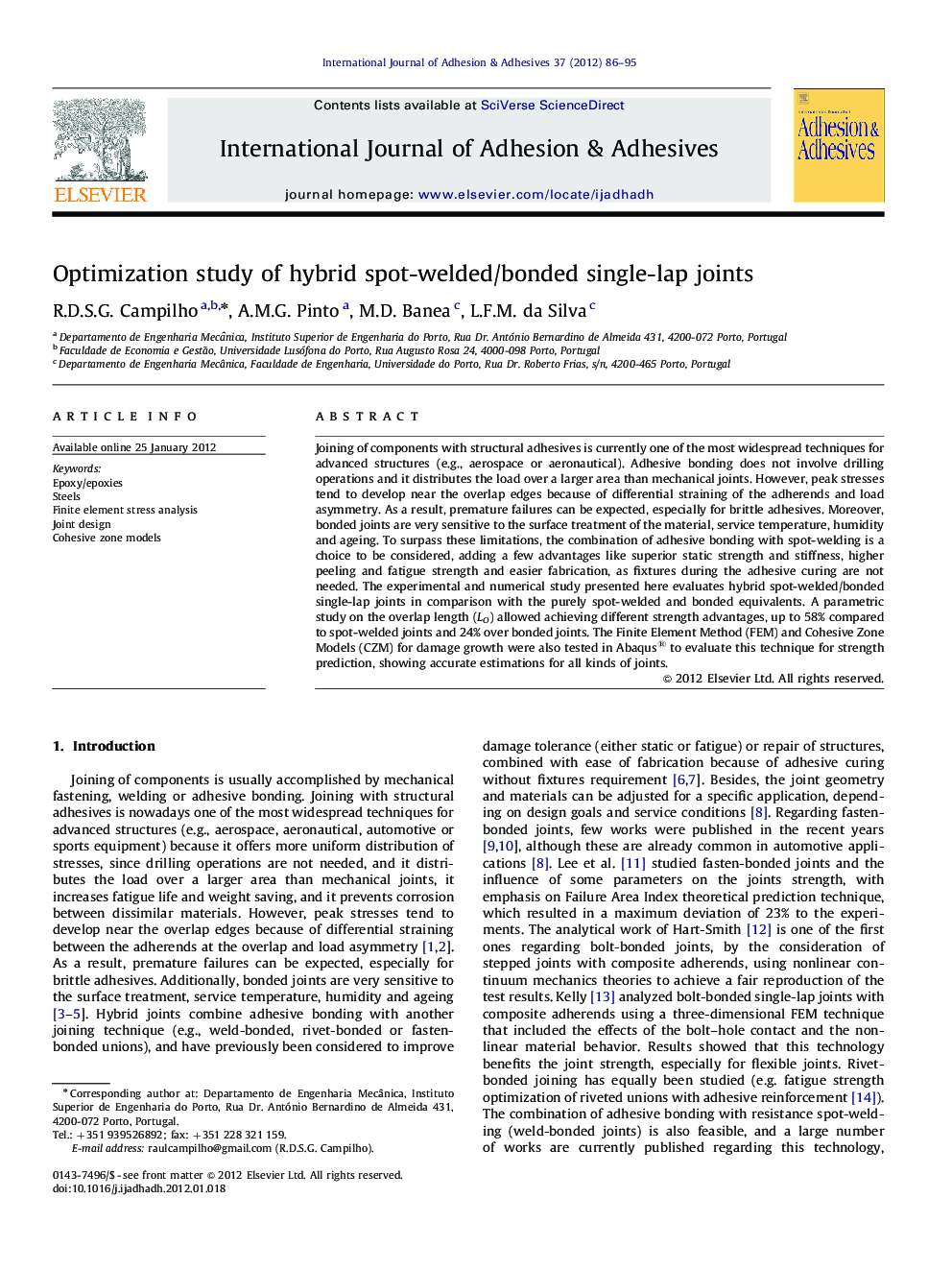| Article ID | Journal | Published Year | Pages | File Type |
|---|---|---|---|---|
| 773416 | International Journal of Adhesion and Adhesives | 2012 | 10 Pages |
Joining of components with structural adhesives is currently one of the most widespread techniques for advanced structures (e.g., aerospace or aeronautical). Adhesive bonding does not involve drilling operations and it distributes the load over a larger area than mechanical joints. However, peak stresses tend to develop near the overlap edges because of differential straining of the adherends and load asymmetry. As a result, premature failures can be expected, especially for brittle adhesives. Moreover, bonded joints are very sensitive to the surface treatment of the material, service temperature, humidity and ageing. To surpass these limitations, the combination of adhesive bonding with spot-welding is a choice to be considered, adding a few advantages like superior static strength and stiffness, higher peeling and fatigue strength and easier fabrication, as fixtures during the adhesive curing are not needed. The experimental and numerical study presented here evaluates hybrid spot-welded/bonded single-lap joints in comparison with the purely spot-welded and bonded equivalents. A parametric study on the overlap length (LO) allowed achieving different strength advantages, up to 58% compared to spot-welded joints and 24% over bonded joints. The Finite Element Method (FEM) and Cohesive Zone Models (CZM) for damage growth were also tested in Abaqus® to evaluate this technique for strength prediction, showing accurate estimations for all kinds of joints.
